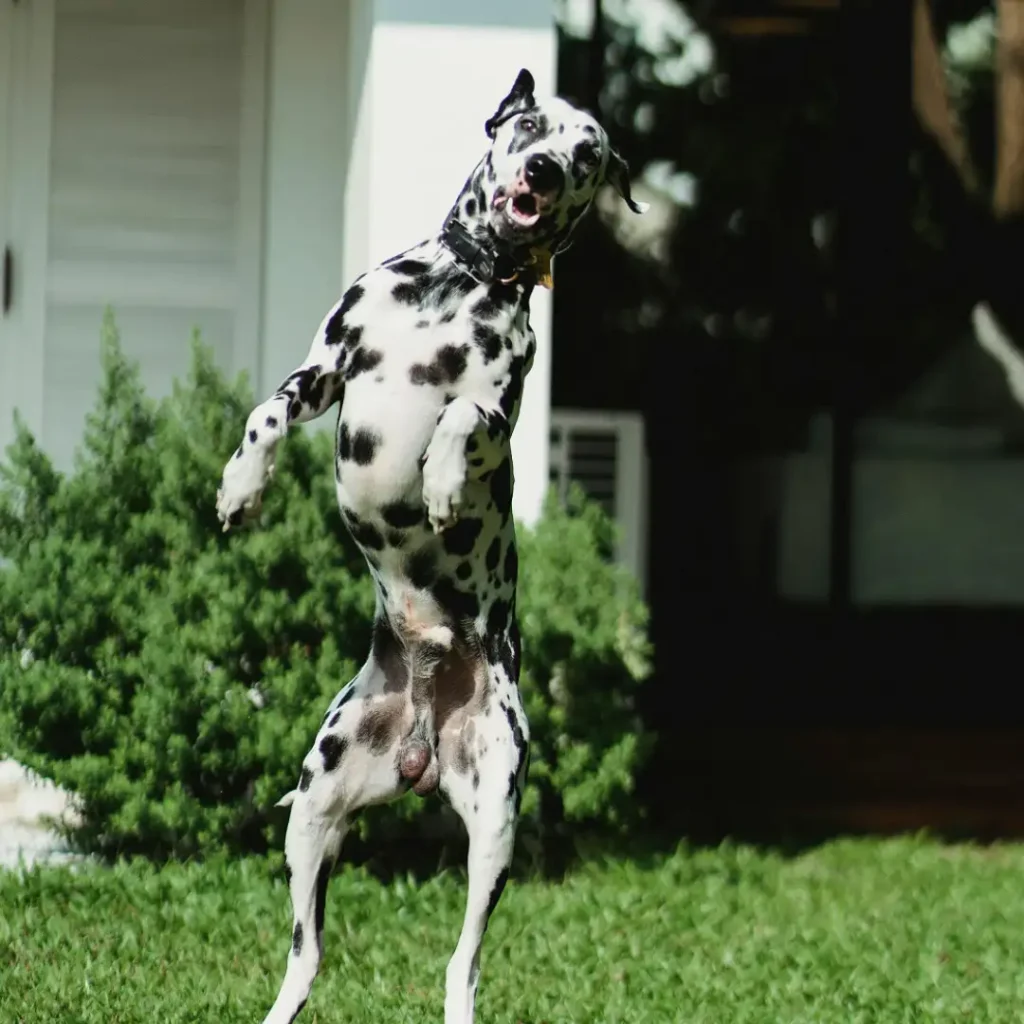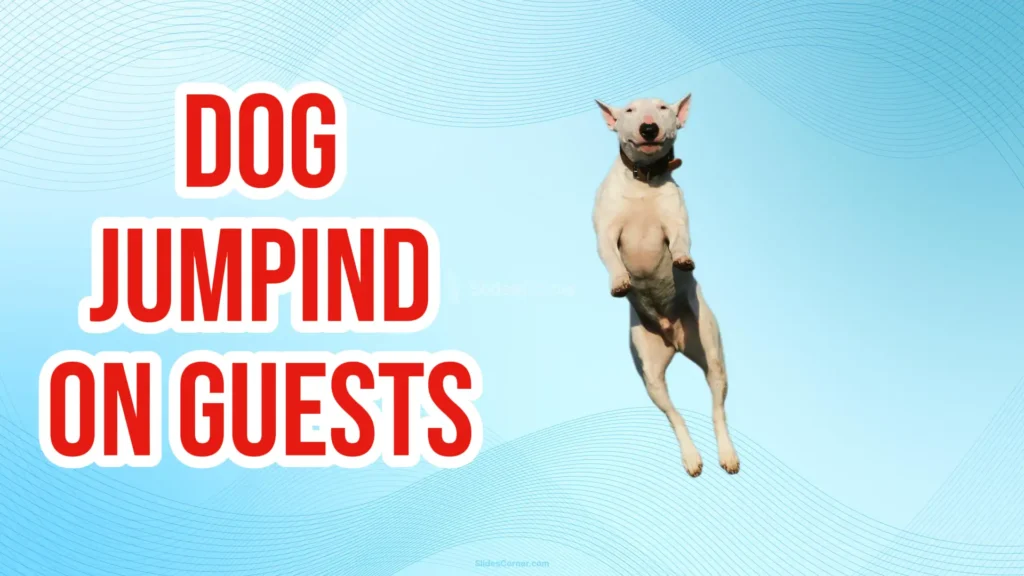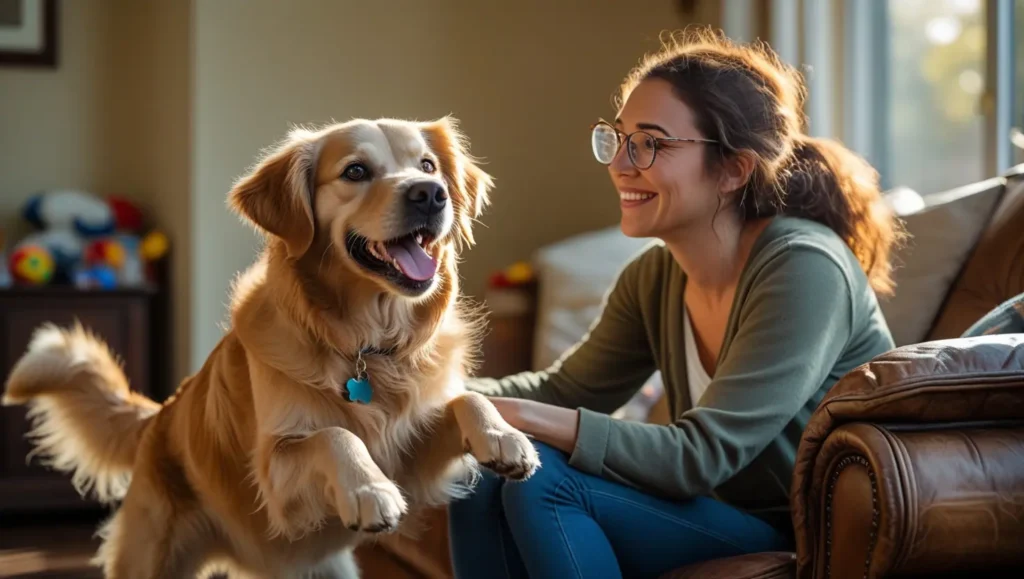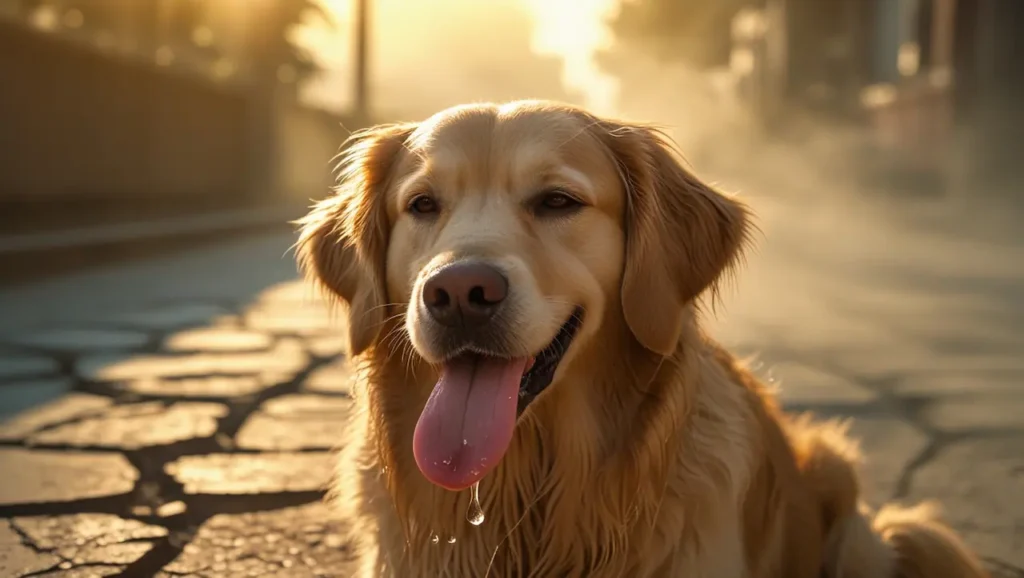Dogs sometimes show undesirable behaviors. Many of them jump on guests. This behavior can be embarrassing for pet owners. Fortunately, you can teach your dog to greet people politely without jumping.
Why Do Dogs Jump on People?
It’s crucial to understand why dogs engage in jumping on guests. Dogs don’t jump out of malice. They’re simply expressing themselves in ways that feel natural to them. Try to identify the underlying motivations. You’ll be better equipped to redirect their energy toward appropriate behaviors.
One of the most common reasons dogs jump on people is pure excitement. When a guest arrives, dogs become overwhelmed with joy. Their natural instinct is to express this happiness physically. Jumping is one of the easiest ways for them to do so.
Dogs jumps to seek attention. Dogs do this to get some form of acknowledgment. Negative is Ok. After all, any attention can feel rewarding to a dog who craves interaction.
To break this cycle, it’s essential to completely ignore unwanted jumping behavior. This means no eye contact, no talking, and no physical touch until the dog has calmed down and kept all four paws on the ground.
In the wild, wolves use physical gestures to communicate. Domesticated dogs retain some of these instincts. Jumping can sometimes be linked to their desire to assert dominance and initiate play.
Understanding whether your dog’s jumping stems from dominance or playfulness will guide your training approach. For instance, a playful jumper may benefit from structured playtime before guests arrive. A dominant jumper might need firmer leadership and consistent rules.
Finally, many dogs jump simply because they’ve never been taught not to. Without guidance, dogs won’t inherently know that jumping is considered impolite in human society. It’s our responsibility as owners to provide clear instructions and set expectations.
Step-by-Step Guide to Stopping the Behavior
These steps focus on teaching your dog alternative ways to greet people politely while addressing the root causes of jumping.
Teach Basic Commands
The foundation of good behavior starts with basic obedience commands. Teaching your dog commands like “sit,” “stay,” and “off” gives them clear alternatives to jumping. This helps establish structure in their interactions.
Practice having your dog sit whenever someone approaches. This creates a calm starting point for greetings and prevents them from launching into a jump.
Use the “stay” command to encourage your dog to remain seated until released. This ensures they don’t rush forward to jump on guests.
Train your dog to respond to the word “off” specifically when they jump. Pair this command ignoring them until they comply.
Reinforce these commands daily, both during training sessions and real-life situations.
Ignore Unwanted Behavior
Sometimes ignoring works. Since dogs crave attention, removing it entirely sends a powerful message: jumping doesn’t work.
Here’s how to implement this strategy, as soon as your dog jumps, turn your back immediately. Avoid making eye contact, speaking, and touching them. Cross your arms and stand still. Give signal that you’re uninterested in engaging.
Wait patiently until your dog settles down. Only then should you acknowledge them with praise. This method works because it removes the reward (attention) that your dog seeks. Over time, they’ll learn that staying calm earns them the attention they desire, while jumping gets them nothing.
Reward Good Behavior
Positive reinforcement is the cornerstone of successful dog training. By rewarding your dog for polite behavior, you’re reinforcing the idea that good manners lead to great outcomes.
Whenever your dog greets someone without jumping, immediately reward them with treats. Be specific in your rewards. For example, say, “Good sit!” or “Yes, stay!” to clearly communicate what behavior earned the reward. Gradually phase out food rewards as your dog becomes consistent. Replace them with verbal praise or affection.
The key is timing. Rewards must come within seconds of the desired behavior to ensure your dog makes the connection between their actions and the outcome.
Practice Controlled Greetings
One of the effective ways to stop your dog from jumping on guests is through controlled greetings. This involves setting up structured practice sessions that simulate real-life situations. This allows you to guide your dog’s behavior in a predictable environment. Over time, these rehearsals will help your dog learn how to greet people calmly.
Ask friends, family members, or neighbors to act as “guests.” Explain what you’re trying to achieve so they can support your efforts by following your instructions. Before the session begins, put your dog on a leash. This gives you complete control over their movements and prevents them from rushing toward the guest.

Position yourself near the door with your dog beside you. As the guest approaches, give your dog a clear command such as “sit” or “stay.” Make sure your dog understands they must remain seated until given permission to interact.
If your dog stays seated and calm as the guest enters, immediately reward them.
If your dog jumps despite your commands, turn your back to them and ignore the behavior. Once your dog masters single-guest scenarios, challenge them further by introducing multiple guests at once. You can also vary the location to generalize the behavior.
Even small improvements deserve recognition. Praise your dog for staying calm. Positive reinforcement builds confidence and encourages continued effort.
Controlled greeting sessions are invaluable. They allow you to manage variables and ensure success. By repeatedly exposing your dog to polite greetings in a supervised setting, you’ll build their ability to handle real-world interactions without resorting to jumping.
Manage High-Energy Moments
Dogs jump when their energy levels are too high. High energy makes it difficult for them to focus on commands. Managing your dog’s energy beforehand can significantly reduce the likelihood of jumping during greetings.
A tired dog is far less likely to engage in jumping. So burn off excess energy of your dog. Take your dog out for a brisk walk before guests arrive. Aim for at least 20–30 minutes of physical activity. Engage in interactive games.
These activities require concentration. Your dog will feel relaxed afterward.
In addition to physical exercise, mental enrichment helps tire your dog out in a way that reduces anxiety. Provide puzzle feeders that challenge your dog to think and problem-solve. Spend 10–15 minutes reviewing basic commands or teaching new tricks. Mental workouts can be just as exhausting as physical ones.
Scatter treats around the house and let your dog search for them. Sniffing activates their natural instincts and provides a calming effect.
By combining physical and mental stimulation, you’ll create a well-rounded routine that leaves your dog content and focused. A calmer dog is much easier to manage during greetings and less prone to impulsive behaviors like jumping.
Use Leashes and Barriers
Use additional tools for persistent dogs. Leashes and barriers provide a safety net. They ensure your dog doesn’t have the opportunity to jump while they’re still learning proper etiquette.
Keep your dog on a short leash when guests first arrive. Hold the leash firmly but gently. Use it to guide your dog back to a seated position if they attempt to jump.
For outdoor gatherings, use a long-line leash attached to your dog’s collar. This allows them some freedom to move while giving you the ability to intervene if necessary.
Place a baby gate across doorways to create a physical barrier between your dog and guests. Allow your dog to observe the interaction from a safe distance.
If your dog is crate-trained, consider placing them in their crate. Many dogs find crates comforting and will relax inside while guests settle in.
Once your dog has calmed down, gradually introduce them to the guest under supervision. Start with brief interactions. Reward calm behavior. Over time, increase the duration and intensity of these encounters as your dog becomes comfortable.
Be Patient and Consistent
Training a dog to stop jumping on guests is not an overnight process. It requires time, patience, and unwavering consistency.
Every interaction with your dog reinforces either good or bad habits. Stick to your rules consistently. Don’t scold your dog for jumping one day and then laugh them for the same behavior the next. Inconsistency undermines your training efforts and prolongs the learning curve.
Focus on incremental progress rather than expecting perfection right away. Each successful greeting is a step in the right direction. Reward your dog generously for every improvement. Positivity fosters motivation and strengthens your bond.
Training setbacks are normal. Instead of becoming discouraged, view mistakes as opportunities to refine your approach. Analyze what went wrong during a setback. Was your dog overly excited? Did a guest accidentally encourage jumping? Use these insights to adjust your strategy moving forward.
Stopping your dog from jumping on guests requires commitment. By combining training techniques, you can transform chaotic greetings into enjoyable interactions. With persistence and love, you’ll soon have a pup who greets everyone with grace and poise!




